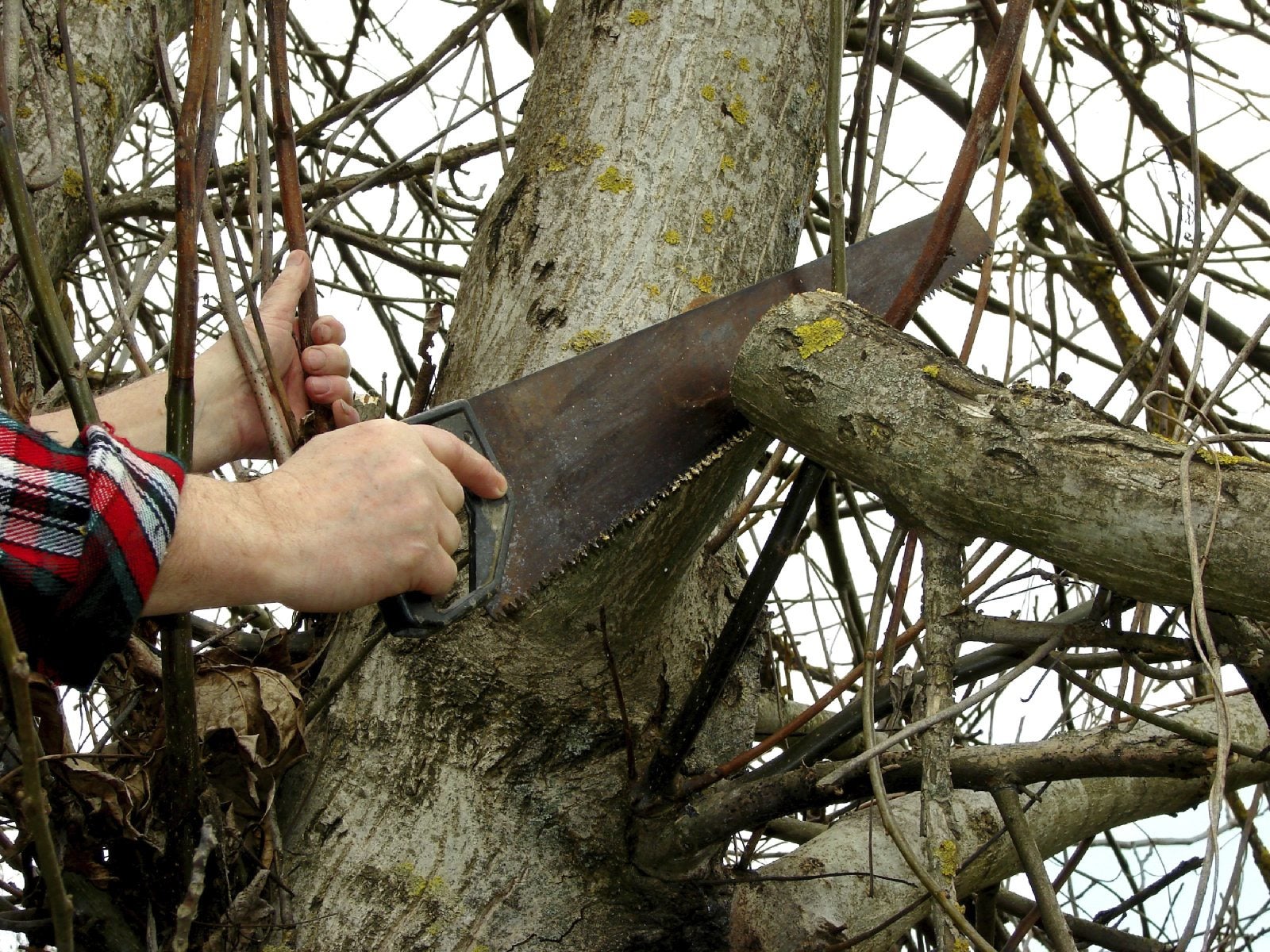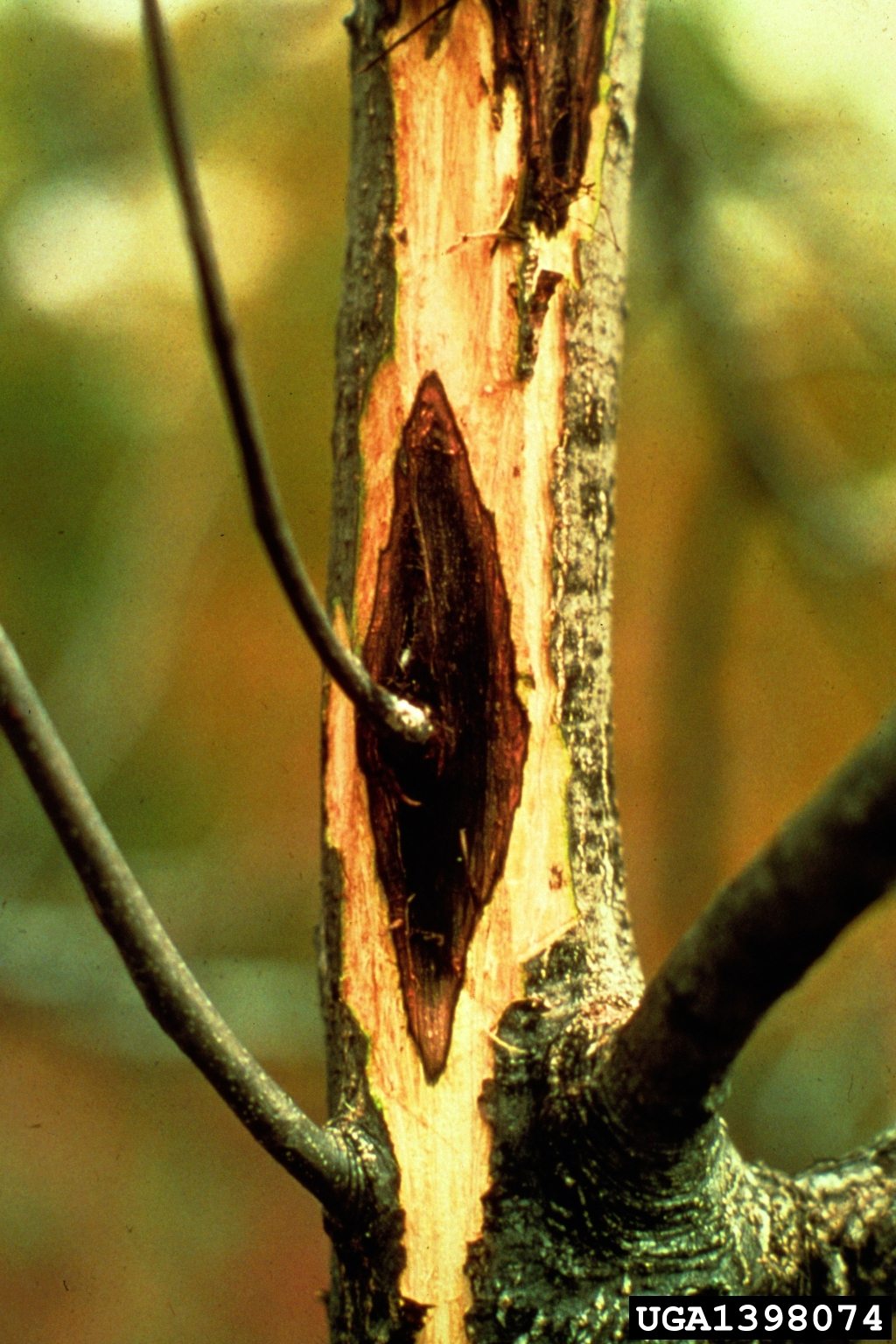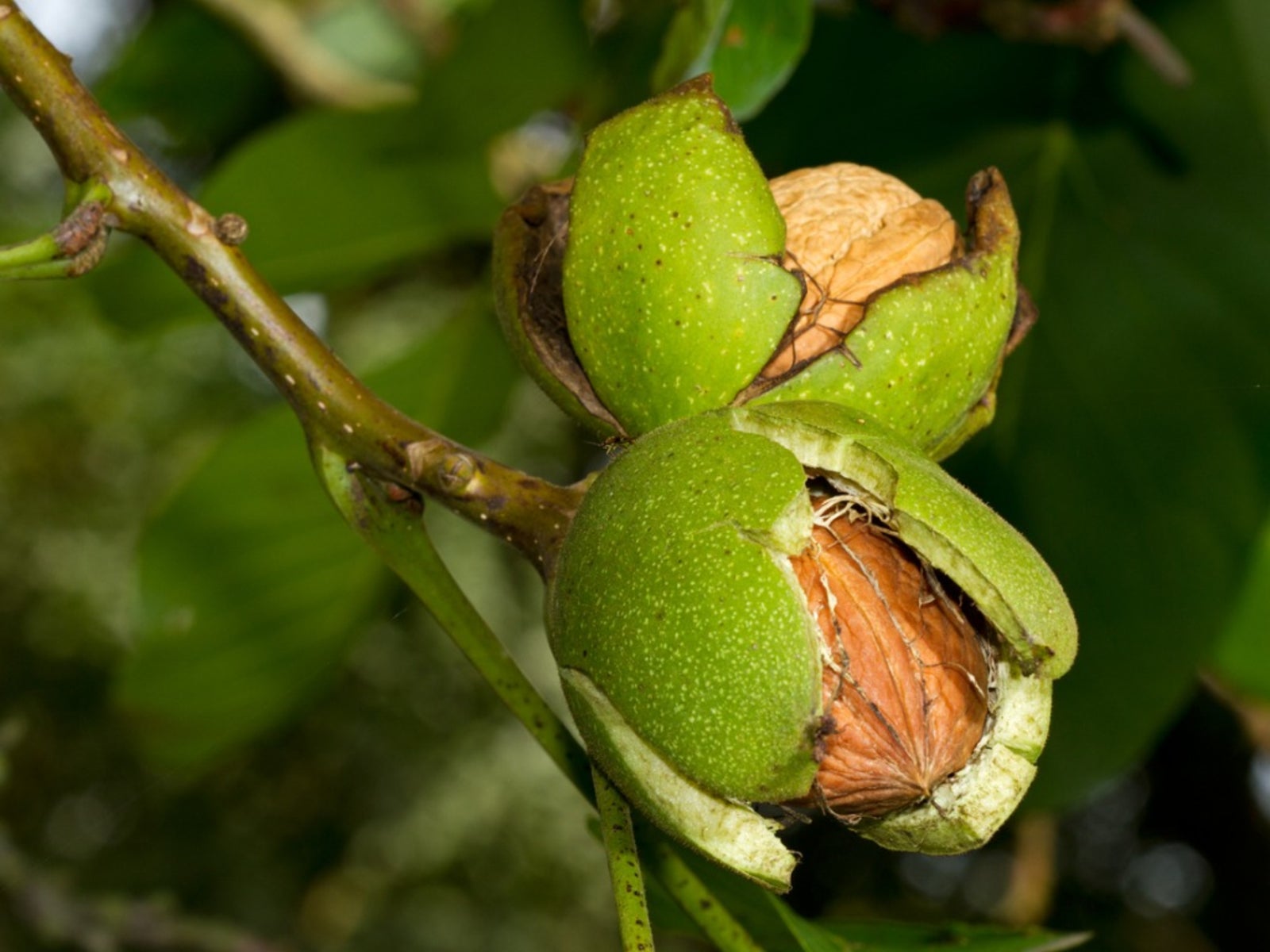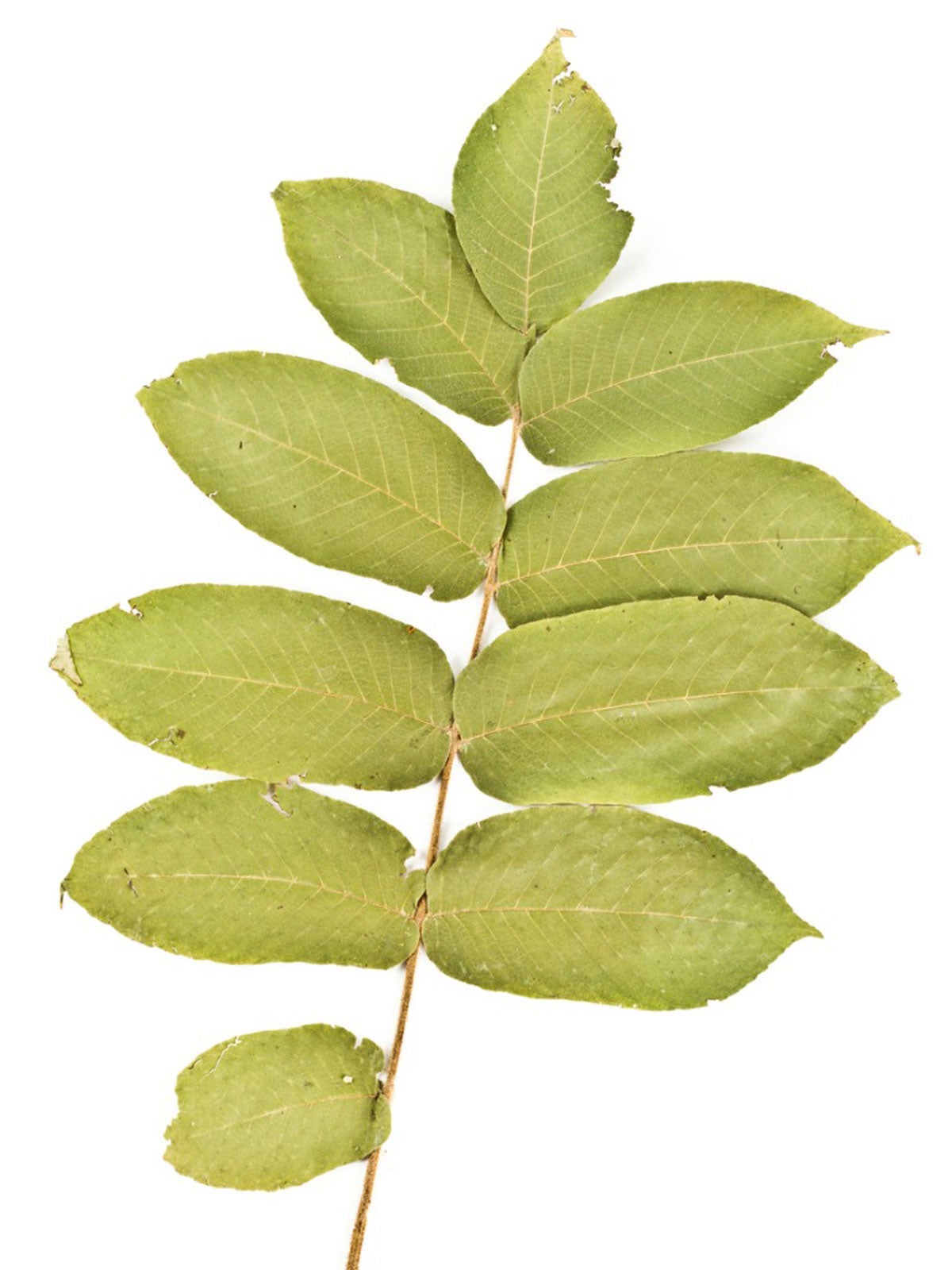Trimming A Walnut Tree: How To Prune Walnut Trees Properly


Walnut tree pruning is important for the tree’s health, structure, and productivity. Walnut trees (Juglans spp.) make very nice shade trees, are excellent timber specimens, and also produce delicious nuts for eating by humans, birds, and squirrels alike. Keep reading to learn how to prune a walnut tree.
Pruning Walnut Trees
Trimming a walnut tree properly is vital to your investment. When you are developing a young walnut tree, you are developing its structure. You need to decide how high up you want the scaffold (side) branches on the trunk.
- For harvesting nuts, you might start your scaffold branches as low as 4 ½ feet (1.5 m.).
- For a shade tree, you might start your side branches at 6 to 8 feet (2 m.) in the air.
When your new walnut tree is too short to start developing scaffold branches, cut back any little side branches to 6 inches (15 cm.) long. Leaving these short branches for a few years encourages trunk strength and vitality, yet doesn’t rob too much energy from the trunk. Once your tree is large enough to start guiding the long-term scaffold branches, you can start cutting off the little stub branches below. It is best to remove the little stub branches before they grow over ½ inch (1 cm.) in diameter. The tree can seal off pruning wounds much more easily when they are smaller. Walnut tree pruning requires careful observation and judgment. Develop potential scaffold branches that are evenly spaced around the trunk. Trimming a walnut tree also involves annually removing damaged branches, crossed over or rubbing branches, and any branches that want to bend back toward the center rather than reach outward. Additionally, walnut tree pruning involves making sure that all side branches remain subservient or lower than the height of the central leader. In these situations, simply shorten the competitive side branches back to a tertiary side branch.
What’s the Best Time to Prune Walnut Trees?
The best time to prune walnut trees is the later end of the dormant season when the trees are still out of leaves. This way you can easily see the form of the tree and you are not cutting away any new growth that appears in spring. Make sure you clean and sterilize your hand pruners and pruning saw beforehand, so you don’t spread disease. Sharpened tools ensure clean cuts too. Trimming a walnut tree should not involve ripping or tearing the bark from dull tools. If you need to remove a larger branch, perform a jump cut to prevent the weight of the branch from tearing away the outer bark of the trunk as the branch separates from the tree. Jump cutting involves three steps.
- First, cut halfway through the branch from the underside just outside the branch collar.
- After that, you want to completely cut off the branch further out, 1 to 3 feet (31-91 cm.), on the limb.
- Finally, you will cut the remaining stub just outside the branch collar.
Walnut tree pruning is an annual event even when the tree is mature. Investing some time and energy into proper walnut tree pruning will yield a tree that is strong, productive, and attractive to view.
Gardening tips, videos, info and more delivered right to your inbox!
Sign up for the Gardening Know How newsletter today and receive a free copy of our e-book "How to Grow Delicious Tomatoes".

Karen Boness is the founder of Wild Willow Design, an Australia-based company that specializes in ecological landscape design.
-
 Types Of Tomatoes Explained: Explore The Many Wonderful Shapes, Colors, Flavors, & Best Uses
Types Of Tomatoes Explained: Explore The Many Wonderful Shapes, Colors, Flavors, & Best UsesThe world of tomato varieties is vast and fascinating. Learn about the key types to grow in your garden, tailored to your preferences and space.
By Amy Grant
-
 Try The Trend – Turn Any Bed Into A Keyhole Garden With This Clever In-Ground Composter
Try The Trend – Turn Any Bed Into A Keyhole Garden With This Clever In-Ground ComposterKeyhole gardening is an efficient and sustainable practice that saves space. Get started on this DIY project quickly and easily with an in-ground composter.
By Bonnie L. Grant
-
 Butternut Harvesting: How To Harvest Butternut Trees
Butternut Harvesting: How To Harvest Butternut TreesAn underutilized nut, the butternut, is a hard nut that is as large as a pecan. If you are lucky enough to have one of these gorgeous white walnut trees, you may be wondering when and how to harvest butternut trees? This article can help with that.
By Amy Grant
-
 Canker In Butternut Trees: Learn How To Treat Butternut Canker
Canker In Butternut Trees: Learn How To Treat Butternut CankerButternut trees are treasures that add grace and beauty to the landscape, but butternut canker disease ruins the appearance of the tree, and it is almost always fatal. Find out about preventing and treating butternut canker in this article.
By Jackie Carroll
-
 Fusarium Canker In Walnuts – Learn About Treating Fusarium Canker Disease on Walnut Trees
Fusarium Canker In Walnuts – Learn About Treating Fusarium Canker Disease on Walnut TreesWalnut trees grow quickly, and before you know it, you have cool shade and a bounty of nuts. You may also have cankers that can kill the tree. Find out about fusarium canker in walnuts in this article. Click here to learn more.
By Jackie Carroll
-
Treating Walnut Bunch Disease: Bunch Disease In Walnut Trees
Walnut bunch disease affects not only walnuts but a number of other trees, including pecan and hickory. Find helpful information regarding symptoms of bunch disease and bunch disease treatment in the article that follows.
By Mary H. Dyer
-
 Is Growing Butternuts Possible: Information About White Walnut Trees
Is Growing Butternuts Possible: Information About White Walnut TreesWhat are butternuts? No, don't think squash, think trees. Butternut is a species of walnut tree and the nuts that grow on these wild trees are easy to process and delicious to eat. For more butternut tree information, click this article.
By Teo Spengler
-
 Walnut Tree Harvesting: When Are Walnuts Ready To Pick
Walnut Tree Harvesting: When Are Walnuts Ready To PickWalnuts are high in protein and delicious! What better reason to grow your own? The question is, when are walnuts ready to pick and what is the best way to pick walnuts? This article will help with harvesting walnuts.
By Amy Grant
-
 Planting Walnut Trees: Tips and Information On Growing Walnuts
Planting Walnut Trees: Tips and Information On Growing WalnutsWalnut trees produce not only a delicious, nutritious nut but also provide shade in the landscape with their large, arching limbs. Learn how to grow walnuts in this article.
By Amy Grant